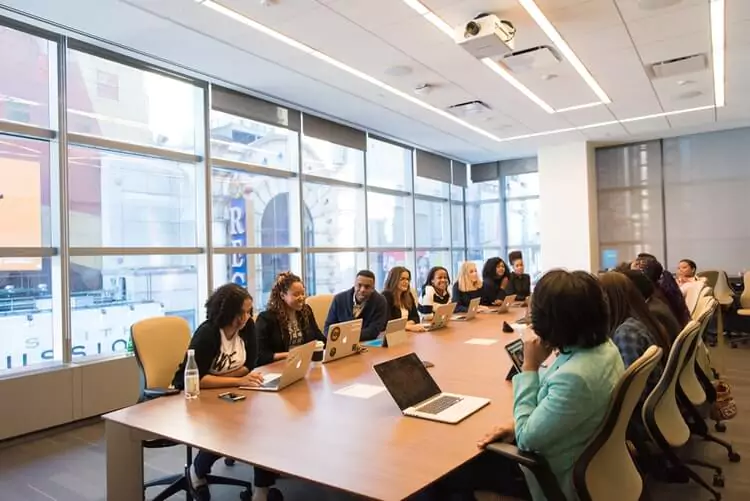Originally published December 15, 2020 , updated on September 5, 2024
Conversion copywriters are wonderful human beings. They write B2B landing page content that converts readers and produces sales. Would you like to have the same skills they do? Would you like to be able to write effective landing page copy? To draw readers in, create endless buzz and produce endless profit?
To be honest, it’s only part skill. The techniques can be learned, practiced and made perfect. The best part is it can be mastered by all. You can write copy that would inspire others and leave them in awe. The most important thing is to understand the techniques at play.
Writing conversion-focused copy is all about understanding your prospect’s mind. How do they process information? How do they make decisions? What convinces them to make a purchase? In today’s blog, we’ll be discussing a few writing techniques that have been proven to drive conversions.
Once you’ve done the hard work of generating loads of traffic, these writing tips will help you turn that traffic into revenue with conversion-focused copy
8 TIPS FOR WRITING EFFECTIVE B2B LANDING PAGE CONTENT
Use Customer Testimonials
Having your customers write your copy for you is one of the most powerful copy techniques.
Nothing starts conversations like testimonials. Good copy consists of source as much as it does style and substance, and that is why any copy you write will never be as good as a customer testimonials. Testimonials are persuasive because they show the consumer exactly what they’ll encounter when using your product or service.
The landing pages of HighriseHQ are a prime example of using customer testimonials, and this plays a big role in their success. Featuring a customer photo next to the testimonial can even further spark conversation around your copy.
Most well performing companies will have testimonials on their landing page, but ConversationXL use testimonials as their headline.
Customers are your best conversion writers. Let them speak for themselves – a good addition to your copywriting and marketing strategy is social proof.
Emphasize the Benefits in Your B2B Landing Page Content, Not the Product
One lesson a lot of marketers still need to learn is that customers don’t actually care about your products or services. They only care about finding an effective and affordable solution to their problem. A Harvard research survey, performed in a number of different fields, encompassing 1,400 B2B consumers, concluded that we have reached “the end of solution sales.”
Sales have historically been focused on the “solution-selling technique.” According to this technique, “salespeople are trained to fit a solution with an identified customer need and show why it is better than the competition.”
This approach is no longer valid, as customers already know what they are looking for.
Thanks to the internet and search engines, they are able to discover just about everything. In reality, not only do consumers understand the solution, they also recognize the specifications they are searching for the criteria that the product must fulfill, and a pricing benchmark.
By only pitching your solution, the customer does not find all they are looking for. Customers want to know the benefits of the solution or service you are pitching. You can mention your solution to let the customer know they are at the right place. That being said, push the benefits of the solution more than the solution itself. Let the customer know what they will receive from using this solution.
Unbounce does this well, successfully emphasising the benefits of their product: “Without IT”; “build a high-converting landing page now”; “we’ve doubled and tripled conversion rates.”
Jaybird, who sells high-end Bluetooth headsets also speaks exclusively about the benefits on their landing page.
Benefits will always be better than solutions. By putting the customer benefits front and center, you can dramatically increase conversion rates, and by doing so take your copywriting to a whole new level.
Spend Time Writing a Killer Headline
People do not read landing page copy meticulously. They search, they glance, and they allow the page to flitter through their eyes, but they don’t read every word.
This means that it is the copywriters job to compel the customer to stop their skimming habits. Here are some things that customers would pay attention to.
- The headline.
- The subheadline.
- The images.
- Buttons for CTA.
Clients may or may not read the following after that:
- Major sections portion.
- Bullet points.
- Short paragraphs.
- Image captions.
As you write your conversion copy, this should give you an idea of what to focus on. The ten or fifteen words in the headline are the most significant piece of your material. Focus on it, nail it, and you’ll have accomplished a lot. In order to help the “non-readers” convert, you should:
- Make your headline stand out and be clear.
- Remember to push your benefits and be compelling.
- You can further display the benefits by using images with written explanations.
- Use strong copy in your CTA.
- Lead with large headlines and break your copy into major sections.
- Use bullet points to discuss the benefits of your product. Short bullet points. Not long ones.
- Use short paragraphs, rather than long blocks of text. Any paragraph over five lines long can be hard to digest.
- Use captions on your images.
Keep Your B2B Landing Page Content Writing Simple
The best advice you’ll ever hear for writing effective landing page copy is going to be the next few words: keep it simple. You could be as literarily great as J.K. Rowling or Stephen King, but literary prowess is useless when it comes to writing conversion-focussed copy. The most powerful writing skill when it comes to writing effective landing copy is simplicity.
Let’s look at Optimizely as an example. They produce some excellent landing pages for their clients, but take a look at their landing page:
Though it seems simple, it’s extremely effective. And why? Because of its simplicity. GetResponse has the same idea.
Again, super simple. Whoever created these landing pages didn’t spend hours brainstorming, outlining, meditating and thumbing through a thesaurus. They wrote the simplest, clearest statements they could. That isn’t an invitation to replace creativity with buzzwords, though. There are certain words and phrases that kill conversions stone dead. ConversionXL has a list:
- “On-demand marketing software”
- “Integrated solutions”
- “Flexible platform”
- “World leader”
- “Once-in-a-lifetime opportunity”
- “Changing the way X is done”
- “Paradigm shifting”
- “Exceeding customer expectations”
Clichés like that just don’t work anymore. Simplicity is key, and we have a few tips for writing effective landing page copy that keeps it simple:
- Keep your sentence structure simple.
- Use short sentences and short words that are easy to skim and understand
- Be clear, be succinct and don’t use fancy wording.
If you can be simple, you can write effective landing page copy..
Write Like a Human
There is another tactic that can help you smash your competition: sound like a human being.
At some point, a group of copywriters thought it would be nice to create copy that sounded forced and robotic. Who writes like that? Who’s reading this stuff? I don’t remember, but I do know that nobody’s going to convert on it.
People prefer to communicate with other people, not robots. That’s why your copy has to sound like it was composed by an actual person. Here are some unique things that you can do to make your writing more personal:
- Write the way you talk
- Use normal words and sentences, like those you would use if you were talking to a ten-year-old. Why use “convivial,” for instance, if you can use “friendly?” ”
- Break the laws of grammar if the writing still sounds normal and pleasant.
- Be funny.
- Talk in the first person.
- Use terms and expressions like you would in a regular conversation. ” I’m wondering…,” “Wait a second.” “It was nuts.” “Wow.” “It was pretty cool.” “It’s like…” “Wow.” “It was pretty awesome.”
With sky-high conversion rates and a strong personal style, Ramit Sethi, a personal finance expert, developer and author of the popular blog “I Will Teach You To Be Rich,” has a strong personal style. His posts feel like a best friend’s confidential letter. He doesn’t even mind adding in a phrase or two that he would use if he was talking with his friends, he would use. Check out one of his blog posts with this excerpt:
Try to get away from the notion that you write “copy,” and think more about it as a dialogue. You’ll write faster if you do that. You can sound human. Your conversion rates will almost definitely go up.
Use Numbers and Get Specific
The more specific you are, the more persuasive and compelling you’ll be.Which one of these arguments makes is more convincing?
“Your conversion rates will go through the roof!”
“In the last 60 days, our customer conversions have increased by an average of 64.3 percent .”
The second is even more accurate, and therefore more reliable. Anyone can make blanket declarations of awesomeness, but facts and detailed metrics can’t just be quoted by anyone.
Let’s take another example. Check out this landing page from TeamGantt. To advertise the advantages of their offering, they use a particular number:
How successful would it be if they said they had planned “millions of tasks?” That amount makes all the difference. Customers want specific reports on the advantages that other customers see, and they want specific explanations of what they are going to get. Specificity is a good weapon
A/B Test Your B2B Landing Page Content Copy
A successful conversion-focused copywriter doesn’t just write – they have to keep testing, too. How else can you know what kind of writing converts higher or lower?
On a landing page, there are all sorts of A/B tests you can do — photos, placement, movement, layout, etc. Typically however, the greatest benefits come from copy modifications. If you want to achieve better and higher sales rates, along with the other elements of your landing pages, you’ll need to test your copy.
Do not expect to hit a homerun your first time. By deliberately, methodically, and purposely testing any deviation, you will excel. Here are several things that can be tested:
- Headline variations
- Subheadline variations
- CTA copy
- Lists of benefits



















